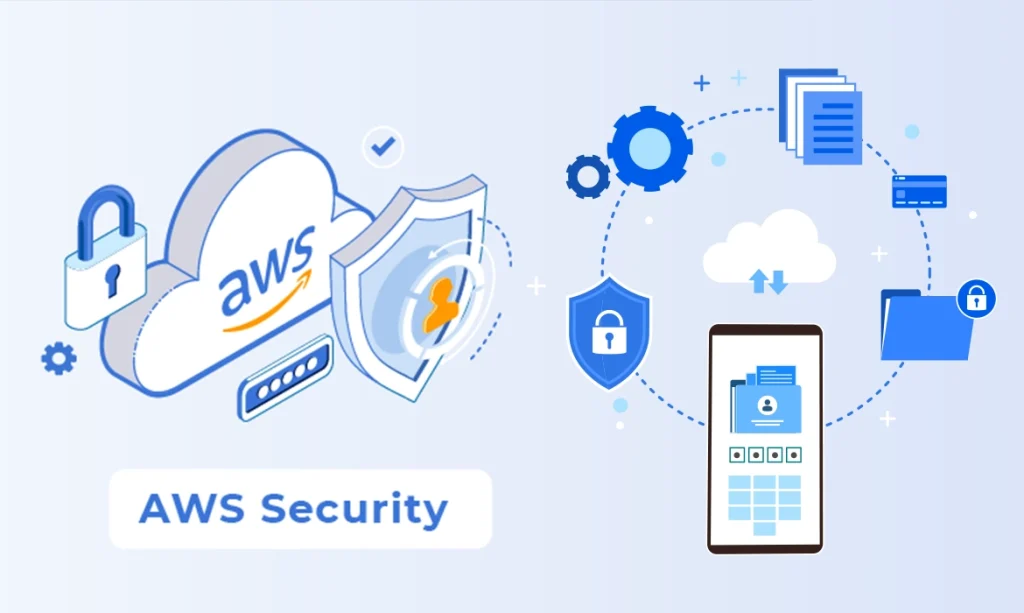You can see in past decades the growth in cloud adoption. Due to the COVID-19 pandemic and the trend of remote work, organizations need to be digital.
On the other hand, as cloud adoption increases, talk about cloud security also increases mostly in public and multi cloud environments.
Using a public or multi-cloud environment, being aware of cloud security, and taking precautions to safeguard the cloud are crucial for any firm looking to prevent data breaches and losses. The AWS Security best practices for clients in the banking, financial services, and insurance industries will be the main topic of this article.
Table of Contents
Why choose AWS?

With 34% occupancy, AWS has established itself as the leader in the cloud infrastructure segment. It is one of the most famous clouds, closely followed by Microsoft Azure and Google Cloud.
By providing a safe, dependable, and best cloud infrastructure, AWS has significantly helped promote digital transformation in many banks and other financial organizations. Capital One, Nasdaq, Stripe, Thomson Reuters, Coinbase, and other well-known financial institutions are some of the popular financial institutions that use AWS Cloud.
Fintech companies and institutions may use the affordable AWS solutions to develop on cutting-edge technologies like blockchain, the web, mobile applications, etc. It aids in their transition from a CAPEX-intensive model of operations to an OPEX model. Additionally, it offers a simple and secure cloud backup solution for data and financial activities. In addition to being cost-effective and focusing on OPEX, the cloud has assisted financial institutions in providing digital consumer experiences at a low cost.
Why does AWS Security matter?
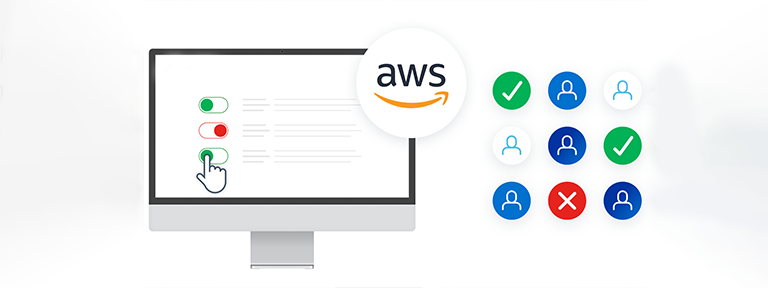
Organizations using the cloud platform have both possibilities and problems due to AWS security.
While AWS places a high priority on providing its clients with cloud security, this is never a one-sided job; rather, it is more of a shared responsibility. As a result, even while Amazon takes all necessary precautions to protect your cloud environment, you also need to have security controls in place for the apps and data you deploy there.
Although AWS security is a broad subject, you should at least concentrate on three questions to cover the fundamentals:
- Who has access to your apps?
- Is there a system in place for tracking file changes in logs?
- Does your company have a strong password policy and practice authentication?
In the AWS cloud environment, the main risks can be unauthorized cloud access, misconfiguration, less secure interfaces, hijacking of accounts, lack of logging and monitoring tools, damage multifactor authentication, less permission control over S3 buckets, and machine state snapshots in public storage.
AWS covers various tools and solutions in it’s security services, but many businesses or organizations fail to implement these tools and thus put their data at risk.
Another issue is the difficulty of creating effective plans for cloud data protection while ensuring adherence to pertinent industry requirements. This is particularly true for financial organizations, since they must adhere to several rules. Utilizing the benefits of the cloud and staying up to date on a variety of best practices and new technologies are necessary for effective AWS security.
Which security risks do financial organizations face with AWS?

The financial sector is targeted by cybercriminals due to the bulk of critical information they carry, like bank account usernames, passwords, account numbers, and more.
- According to a survey, ransomware assaults in the banking sector alone grew by a staggering 1318% in the first half of 2021, disproportionately to other businesses.
- According to another source, U.S. institutions handled ransomware payments totaling over $1.2 billion in 2021.
- Financial institutions undergo cyberattacks 300 times more frequently than other businesses, according to a survey cited by the New York Federal Reserve, demonstrating how appealing this industry is to cybercriminals.
Institutions must keep up with changes in banking technology and the complexity of financial rules in order to secure clients and their data. Malware, data theft, and social engineering are just a few of the main hazards that financial services companies face today.
Nowadays, the risk is increased as transactions become digital and more cashless.
Cloud security is still a problem for the banking industry, despite the risks. Many banks don’t appear to comprehend the hazards associated with their cloud infrastructure. Other difficulties that banks have when it comes to cloud security include a lack of IAM (Identity and Access Management) controls, incorrect settings of the cloud environment, and a lack of visibility and monitoring.
Inadequate internal controls can also result in fraud or transaction errors that cost money. Banks must establish uniform rules and processes for safeguarding all types of consumer data, spotting and countering online threats, and reducing internal mistakes if they want to stay secure.
Top 10 AWS Security Best Practices
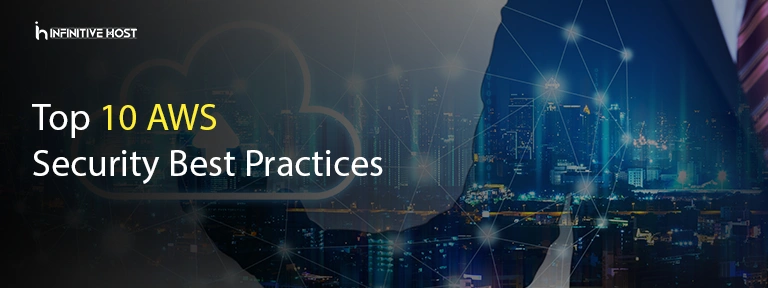
In AWS a Cloud Platform, there are some services used for multiple purposes, like data storage, productivity tools access, and IT infrastructure deployment. In each of these cases, cloud services enable organizations to move faster. Though using any cloud service, even AWS, has its challenges and data security threats.
The application environment should be secured using cloud security practices, which are a set of general best practices that businesses should use. These recommendations also explain how to move, run, and boost your company to the cloud.
For the purpose of creating a safe basis for DevOps activities, the term “DevSecOps” has been developed. Built-in security is the focus of DevSecOps. Every stage of the software development lifecycle incorporates security.
To direct Financial Service Industries toward a safe AWS Cloud and solve AWS Security concerns, we’ve outlined a set of AWS security best practices in the stages that follow.
For a secured application environment, you need to follow some general terms. Through this article, you will be able to shift, lift, and operate your business on the cloud. DevSecOps a new term used to create a secure foundation for DevOps.
Embracing DevSecOps: A Vital AWS Security Best Practice

The phrase “DevSecOps” is relatively new term. The Software Development Life Cycle (SDLC) now includes security. DevSecOps is a partnership between security teams and development teams under the DevOps framework. To put it briefly, everyone participating in software development has a responsibility to participate in integrating aws security into the DevOps process. There are three fundamental processes in DevSecOps to secure Continuous Integration and Continuous Deployment.
- Include standardized and automated security checks in the creation and use of software.
- Putting policies and practices into place to assure code freshness when a vulnerability fix is present in the most recent software release.
- Recognize problems and take steps to fix them as soon as you can.
Veracode offers dynamic and static code analysis to find vulnerabilities and lower risks, helping to secure software development and testing before going into production. Before a release, it is used to inspect the source code and do rapid checks.
Veracode supports web apps, mobile apps, and microservices; it makes sure that the software is safe; it can test thousands of apps at once; and it provides accurate, dependable security feedback.
Developers using the IDE receive automatic aws security input from Veracode Static Analysis. Before deployment, the CI/CD pipeline does a scan and provides detailed instructions for identifying, prioritizing, and resolving problems.
Enhancing Security with Amazon Web Application Firewall on AWS
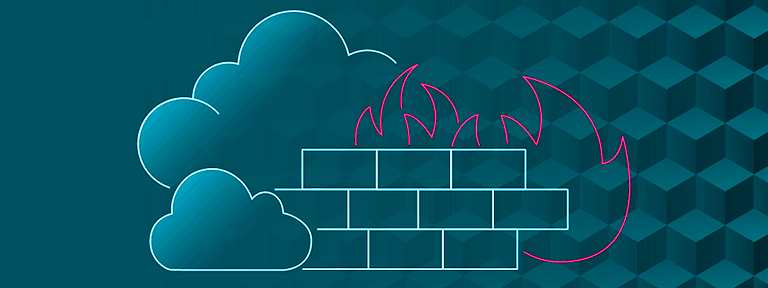
AWS WAF a Web Application Firewall that helps secure applications on the AWS Cloud from general web risks that can harm the applications’ availability, security, and can also consume infrastructure resources, which leads to slowness and increased resource usage. WAF offers AWS security and secure applications or websites hosted on AWS, and it’s one of the AWS security services provided by AWS Cloud.
AWS Lambda may be used with WAF to scan weblogs, spot malicious requests, and automatically change aws security rules in order to automate security. Cross-site scripting, SQL injection, and assaults from known bad IP addresses are all types of threats that AWS WAF can protect against.
Example
Valid requests are forwarded to your application deployed in the VPC, whereas requests from hackers that match the WAF rules are blocked. These rules, which include a list of IPs that go above request limitations, can result in HTTP floods, and can create bad requests, can be used as a pre-configured template to rapidly get started with AWS WAF.
Strengthening Defense with Amazon Security Groups in AWS
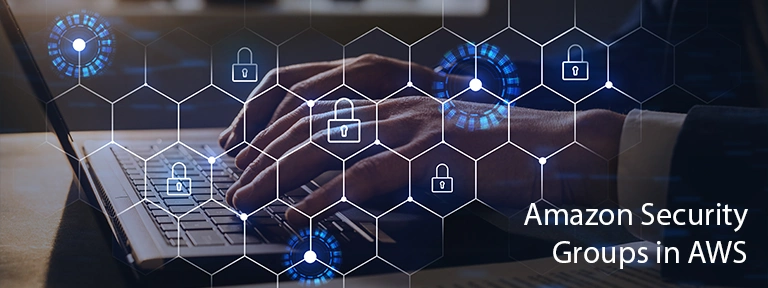
Security Group acts as a virtual firewall for EC2 instances on AWS cloud to control inbound and outbound traffic flow and offers cloud security. Security groups are handled at the instance level, and each instance has five security groups attached. Incoming traffic can’t be blocked, but it can be allowed on a particular port or range of ports.
Security Groups are full with statements and you don’t need to add rules for return i.e. when a rule permits traffic into an EC2 instance, it also permits answers to leave the EC2 instance. One of the recommended AWS security practices is the use of security groups.
Example
When you allow connection on port 22 from a certain IP, the IP is now able to connect to the EC2 instance on port 22. The connection will automatically flow out of the EC2 instance via port 22 on that allowed IP.
Detecting Threats: Leveraging Amazon GuardDuty for AWS Security

This does not offer security, but it monitors malicious activity and unauthorized behavior, detects malware and threats, and protects accounts, workloads, and Amazon S3 stored data in buckets. Guard Duty is a smart and cost effective option for continuous monitoring of threats on the AWS Cloud. To identify threats, Guard Duty uses machine learning, anomaly detection, and integrated threat intelligence.
For continuous analysis of network, account, and data activity you can easily enable the Guard Duty with few clicks. Guard Duty examines DNS Logs, VPC Flow Logs, Cloudtrail S3 Data Events, Cloudtrail Management Events.
Example
The machine learning model of Guard Duty can now assist you in identifying suspicious activity in your account if your banking application is deployed in AWS and you use S3, EC2, RDS, and a few other services. These suspicious behaviors include unusual Amazon S3 discovery API calls, unauthorized creation of new IAM users, roles, or access keys, resource hijacking of Amazon EC2 instances, and generating Amazon RDS snapshots.
In-Depth Security Assessment: The Role of Amazon Inspector
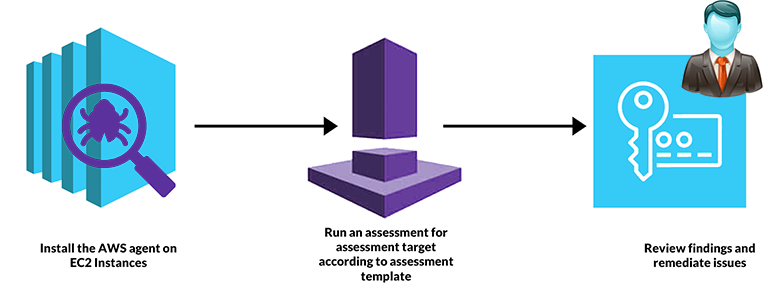
AWS Inspector is a service that automatically evaluates security. It assists in achieving cloud security and enhancing the compliance and security of the applications deployed on the AWS Cloud. It automatically evaluates applications for flaws, exposures, and deviations and generates a thorough report of security findings that are ranked according to severity. Amazon Inspector examines EC2 instances for vulnerabilities and unusual network accessibility.
Example
When it comes to the financial industry, governments establish a number of rules at the municipal and federal levels, which may be hard to track down. In this situation, Amazon Inspector may help by enabling recurring scheduled vulnerability scan audits. This might provide the company the assurance it needs to claim that they are following the best practices and legal requirements.
Proactive Monitoring: Leveraging CloudTrail and CloudWatch for AWS Security
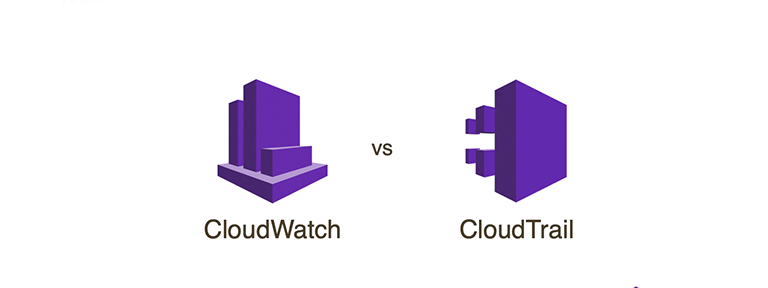
CloudTrail
By automating the capture and archiving of event logs for activities taken inside the AWS account and improving visibility into your resource and user behavior, CloudTrail makes compliance audits simpler. Compliance, governance, operational auditing, and risk auditing of the AWS account became possible with the cloud trail. Functional analysis and problem-solving are made simpler.
Example
After making an API request, you may often start tracking account activity within 15 minutes if Cloudtrail has been enabled in your account. You may verify the trail, learn who produced the resources in your account if you are unsure, and then respond appropriately to the aid if necessary. After making an API request you may often start tracking account activity within 15 minutes if Cloudtrail has been enabled in your account. You may verify the trail, learn who produced the resources in your account if you are sure, and then respond appropriately to the aid if necessary.
CloudWatch
Monitoring and observability are possible with the AWS Cloudwatch service. It offers information for tracking apps set up in the AWS account. The same monitoring information can improve resource use and provide information on the condition of the application. To maintain your apps functioning properly, you can use Cloudwatch to set alarms, get alerts, visualize logs and analytics, execute automatic actions, and gain insights.
Example
You may establish an alarm that is triggered when configuration changes occur in AWS security groups so that you are informed whenever there are changes to your security group. Additionally, you may keep an eye on failed attempts to sign into the AWS Management Console and receive alerts when this happens.
Securing Access: Best Practices with Amazon Key Management System (KMS) on AWS
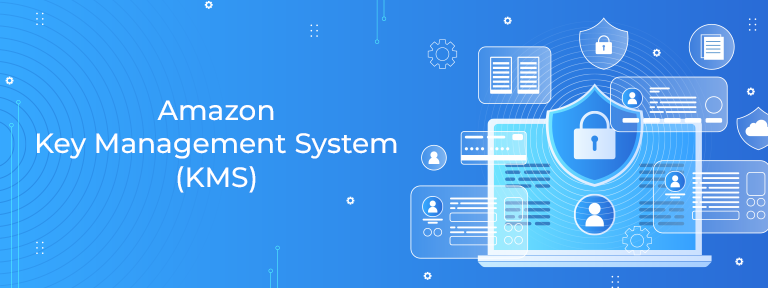
For any type of encryption, you need to use a cryptographic key. Again, managing this key is a difficult process. Now, it is simple to create and manage these cryptographic keys thanks to AWS KMS (Key Management Service). Also, it manages how it is used by different AWS security services and applications. AWS KMS is an AWS Service for Centralized Key Management that is completely managed. It serves as a single point of control for cryptographic keys. Using KMS, permissions on keys may be simply created, imported, deleted, rotated, and executed. KMS enhances AWS Security.
Building Resilient Defenses: The Role of Cloud Security Frameworks in AWS

Up to this point, we have seen difficulties, dangers, and a few AWS Security Best Practices. To manage the security of a cloud platform, there are specialized policies, tools, regulations, and settings required. These organizational and security principles are described in cloud security frameworks. The functions needed to address cybersecurity-related risks in a cloud context are listed in Cloud Security Frameworks. A framework and technique are offered by cloud security frameworks to assist in preventing severe security events.
Speaking about AWS, the company’s cloud infrastructure and services have been certified by the CIS Security Software for the CIS Benchmark(s), PCI DSS Level 1 Service Provider, and NIST 800-53 Revision 4 controls.
Let’s now quickly go through each of these frameworks one by one.
PCI-DSS (Payment Card Industry Data Security Standard)

By creating standards and supporting services that encourage education, awareness, and practical application by stakeholders, PCI-DSS (Payment Card Industry Data Security Standard) seeks to improve the security of worldwide payment account data. It encourages the Payment Card Industry to adopt standards for the protection of cardholder data globally. For businesses that accept or process payments, PCI-DSS establishes technical and operational standards as well as guidelines for ensuring payment security.
NIST (National Institute of Standards and Technology)
The National Institute of Standards and Technology (NIST), a division of the U.S. Department of Commerce, is dedicated to upholding individual privacy rights. NIST plays a major role in establishing standards and guidelines for security controls within federal agencies’ information systems. Additionally, NIST offers a framework for enhancing cybersecurity in critical infrastructure. As part of its commitment to preserving the integrity, confidentiality, and availability of information, federal information systems typically undergo a rigorous formal assessment process.
The NIST Cybersecurity Framework (CSF) enjoys global support from governments and industries, making it a widely endorsed foundational standard for all types of organizations.
NIST (National Institute of Standards and Technology) the part of U.S. Department of Commerce and commits to protecting personal information. It offers standards and policies for information system security measures for government agencies. A methodology for enhancing critical infrastructure cybersecurity is also provided by NIST. The Federal Information Systems normally needs to go through a formal assessment to make sure that adequate protection of information integrity, confidentiality, and availability is provided. Governments and businesses from all around the world recognize the NIST Cybersecurity Framework (CSF) as a suggested starting point for every company.
CIS (Center for Internet Security)
Making the internet a safer environment for individuals, organizations, and governments is the goal of the non-profit organization CIS (Center for Internet Security). It offers recommendations for best practices for protecting online data and IT infrastructure. It seeks to create, validate, and advance the best strategy for defending individuals, organizations, and governments from online threats. CIS provides a range of services, memberships, tools, and initiatives to help secure companies. Among CIS’s services are MS-ISAC, CIS Controls, CIS Benchmarks, and CIS CyberMarket.
Data Protection: Implementing 256-bit Encryption with AWS Security

End-to-end encryption is a technique for protecting communication from outsiders by encrypting it. Transparent Data Encryption, or TDE, encrypts data that is stored on database instances and is supported by AWS RDS for Oracle Enterprise Edition and SQL Server Enterprise Edition. Data is automatically encrypted by TDE before being written to databases or storage, and it is automatically decrypted when it is retrieved from databases or storage. This type of encryption is used, when it is very essential to encrypt sensitive data. TDE is one of the best practices for enhancing AWS Security and helps to store sensitive data in an encrypted format on the AWS Cloud.
Assessing Vulnerabilities: Penetration Testing on AWS for Robust Security

Users of AWS are allowed to do penetration tests on a limited number of services in their accounts (8 Services as of June 21, 2021). The user is required to follow the rules established by AWS for such experiments. By adhering to Penetration Testing’s principles and procedures, you can do pen tests on your AWS account. AWS approval is not necessary to do pen tests on your account. Additionally, contracted third parties may carry out security analyses, provided they do not break AWS’s specified policy.
Penetration testing services that are permitted:
- Amazon EC2 instances, Network Address Translation (NAT) Gateways, and Elastic Load Balancers
- RDS, Aurora
- CloudFront
- API Gateways
- Lambda and Lambda Edge functions
- Lightsail resources
- Elastic Beanstalk environments
Prohibited activities for Penetration Testing:
- Route 53
- Denial of Service
- Port flooding, Request flooding Protocol flooding
Customers cannot undertake Distributed Denial of Services (DDOS), and if they choose to do so, they should examine AWS’s DDoS Simulation Testing policy.
To understand more about AWS security, you can also view our presentation about the best AWS services.
Wrapping Up
Securing sensitive financial data and maintaining the highest levels of security are paramount for the Banking, Financial Services, and Insurance (BFSI) sector. Embracing AWS security best practices is not just a choice but a necessity in today’s digital landscape.
The 10 essential AWS security best practices discussed in this article serve as a robust foundation for BFSI customers to fortify their AWS environments. These practices encompass a holistic approach to security, covering everything from identity and access management to data protection and incident response.
By adopting these best practices, BFSI organizations can reduce security risks, ensure compliance with industry regulations, enhance customer trust, and ultimately protect their bottom line. It is crucial for organizations to continually monitor and evolve their security strategies to adapt to emerging threats and evolving technology. AWS provides a powerful platform for security, and when leveraged effectively with these best practices, it can enable the BFSI sector to navigate the complex cybersecurity landscape with confidence and resilience.
Remember, security is not a one-time thing but an ongoing commitment. Regularly assessing, optimizing, and fine-tuning your AWS security measures will help keep your organization one step ahead of potential threats and ensure the long-term integrity and success of your operations in the BFSI sector.
Related :- The impact of AWS in the Cloud industry


